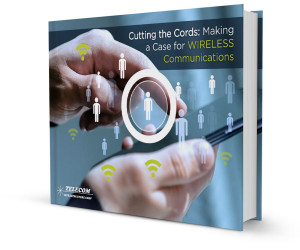
We’ve gone from sharing snail-slow wired connections with our home telephones to lightning-fast data transfer over wireless signal and LTE in just a few short years, but the newest development in the transmission of data looks like something out of science fiction. LiFi – also known as Visible Light Communication or VLC- is the new frontier of wireless communication, and it literally transmits data using light.
Reasearch into LiFi has actually been ongoing since 2003; when wireless technology was in its early stages, researchers in the US, UK and Germany turned to light as a potential transmitter with the thought that visibile light would be a secure and fast way to send data. The internet progressed faster than the research, and wireless routers and cellphone towers became the de facto ways of transmitting information without being tied down by cables. Research into LiFi continued, however, under the direction of Harald Haas, and now sufficient breakthroughs have been made that Haas was able to demonstrate video streaming via light at a recent Ted Talk.
LiFi works by turning LED lights off and on again at speeds much too fast to see with the human eye. These infinitesimally fast fluctuations can be interpreted by receiving equipment as data, and thanks to the speed at which light travels, LiFi can transmit vast quantities more information than a traditional wireless signal. LiFi is also free, safe and secure: in fact, light can often travel where radio waves cannot, making LiFi a potential savior in environments where connectivity has traditionally been a handicap. Haas and his fellow researchers envision LiFi ushering in an age of technology he calls the “internet of things”, in which any object that can house an LED light becomes a potential transmitter of information. Household lamps could be used to power a home wireless system; on airplanes, overhead lights could keep passengers connected mid-flight, and workers in mines and oil rigs, where radio waves typically cannot penetrate, could remain connected to vital information services thanks to the lights that illuminate their workplaces.
LiFi does, of course, have some limitations. Light can be blocked easily by physical objects: in his talk, Haas demonstrated how blocking the signal from his single-LED transmitter caused his streaming video to stop in place. For household use this is not a problem: light usually comes from above and is reflected off enough surfaces in a typical room that signal should continue uninterrupted even if the light’s direct path from its source to its receiver is blocked. Spaces with less reflection, more potential blocks or few light sources, however, could find their LiFi signal less reliable. Speed is also turning out to be more of a difficulty in practice than in theory. Early tests maxed out at around 3Mbps, which is barely above the threshold of acceptable for most urban consumers. More recent tests have reached speeds of up to 10Mbps, which is more promising but still well below the blazing fast speeds of fiber-based internet, and well below what Haas and his colleagues believe LiFi’s potential to be.
Despite these setbacks, research into LiFi continues to be promising. As our everyday devices become more and more connected, a true “internet of things” is not just possible, but just around the corner.
Featured image courtesy of Veronica Aguilar licensed via Creative Commons.

 Wired networking is quickly becoming the dial up internet of the current decade as wireless technology is advancing at an incredibly rapid pace. Is going wireless in the best interest of your business? Download our FREE book right now entitled "Cutting the Cords: Making a Case for Wireless Communications" and find out!
Wired networking is quickly becoming the dial up internet of the current decade as wireless technology is advancing at an incredibly rapid pace. Is going wireless in the best interest of your business? Download our FREE book right now entitled "Cutting the Cords: Making a Case for Wireless Communications" and find out!